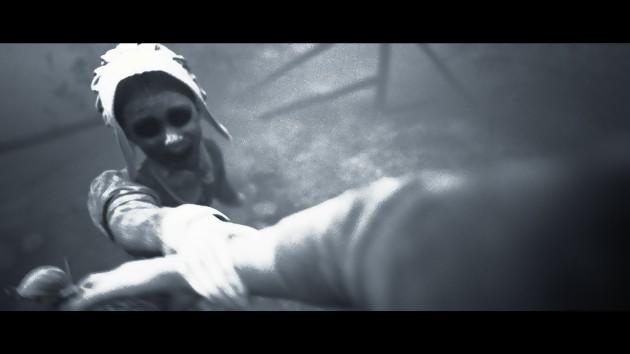
Unlike Man of Medan which offered only one era, Little Hope takes the player through different ages (1692, 1972, present day) to better muddy the waters and make the final twist unpredictable.
Beyond preceding more tense sequences, the moments of calm are an opportunity to focus on dialogues which, we admit, are not more inspired than those of Man of Medan. No doubt because we are once again dealing with protagonists who meet the stereotypes dear to Supermassive Games. At the top of the bill, the studio has set its sights on British actor Will Poulter (The Revenant, Midsommar) who lends his features to Andrew. Despite his young age, the latter tries to take the situation in hand with more or less success. His confidence sometimes disturbs his teacher John, who is played by Alex Ivanovici, whom Assassin's Creed fans know particularly well – he has dubbed several characters in the series. Authoritative and adept at sarcasm, he tries to keep his cool in the face of the strange phenomena that occur in Little Hope. For her part, Angela (played by Ellen David, a Canadian actress already heard in Assassin's Creed and Watch Dogs) is the oldest member of the group; but despite her advanced age, she does not hesitate to brave danger with a temerity that commands respect.
WHILE THERE IS HOPE...
Finally, the service couple is represented by Daniel (Kyle Bailey) and Taylor (Caitlyn Sponheimer): if the handsome guy is optimistic by nature and not afraid to sacrifice himself, his girlfriend prefers to play the card of caution instead facing the unknown. Where Little Hope contrasts with Man of Medan is that we will find the same faces in the three periods mentioned above, but with different characters and relationships. As Bandai Namco Entertainment kindly asked us not to spoil anything – and it's logical – we leave you the pleasure of discovery. What we can tell you, however, is that the movement of the characters has become more flexible. Remember: in Man of Medan, it felt like playing Heavy Rain with classic controls. The inertia was horrible, which made exploring painful. Here, going from one point to another is no longer a pain: by pressing L1, you can now accelerate your pace. Superb. Fixed shots – both aesthetic and distressing – remain in place, and in certain passages, it is now possible to control the camera with the right stick to better scan the surroundings.
These are not the only changes made by Supermassive Games, because we notice that the answer choices are much clearer, which avoids making a bad decision. In Man of Medan, some vague titles stupidly led to the loss of a character. With Little Hope, at the end of our first run, we only suffered one victim because we let ourselves be deceived by the scenario; we corrected the situation on our second attempt. QTEs are also less punishing than in Ghost Ship; this was one of the main complaints made by the players. The developers have not only lengthened the action window, but they have also added an icon that warns us when a QTE is going to trigger. This signal kills the challenge a bit, we are not going to lie to you. For the rest, the formula has not changed: the butterfly effect is required, and each action likely to modify the course of history is recorded in the famous Trajectories.
QTEs are also less punishing than in Ghost Ship; this was one of the main complaints made by the players. The developers have not only lengthened the action window, but they have also added an icon that warns us when a QTE is going to trigger.
Thanks to the clues distilled by the Curator, and premonitions – the equivalent of totems in Until Dawn – we can anticipate events and save ourselves drama. Clever, the developers have not arranged these in order. Basically, a premonition discovered at the beginning of the adventure may very well be linked to a sequence taking place in the last chapters. Perfect for keeping the player alert. Little Hope also inherits some inconsistencies noted in Man of Medan. For example, the fact that a protagonist says white after having said black just before will not surprise anyone; it is as if their reactions do not really take into account our previous choices. The same goes for cut scenes/gameplay transitions: a character may well be chased by a creature, but when you take control, none of his companions refers to it, as if nothing had happened.

It doesn't seem like much said like that, but there are times when it takes us out of the game. Too bad, because visually, Little Hope is doing better than Man of Medan. Whether it's the rendering of the characters, the cut scenes, the lighting, or the textures, it seems to us to be better controlled. On the other hand, the facial animations are quite uneven: suddenly they are just aiming, suddenly they are off the mark. Finally, like The Last of Us 2, Little Hope has thought about accessibility: several options allow you to enlarge the size of the subtitles, cancel the expiry of QTEs, hold down a key to perform repeated actions, change the color of the text, or even assign a single key for QTEs. Always good to point out.


























